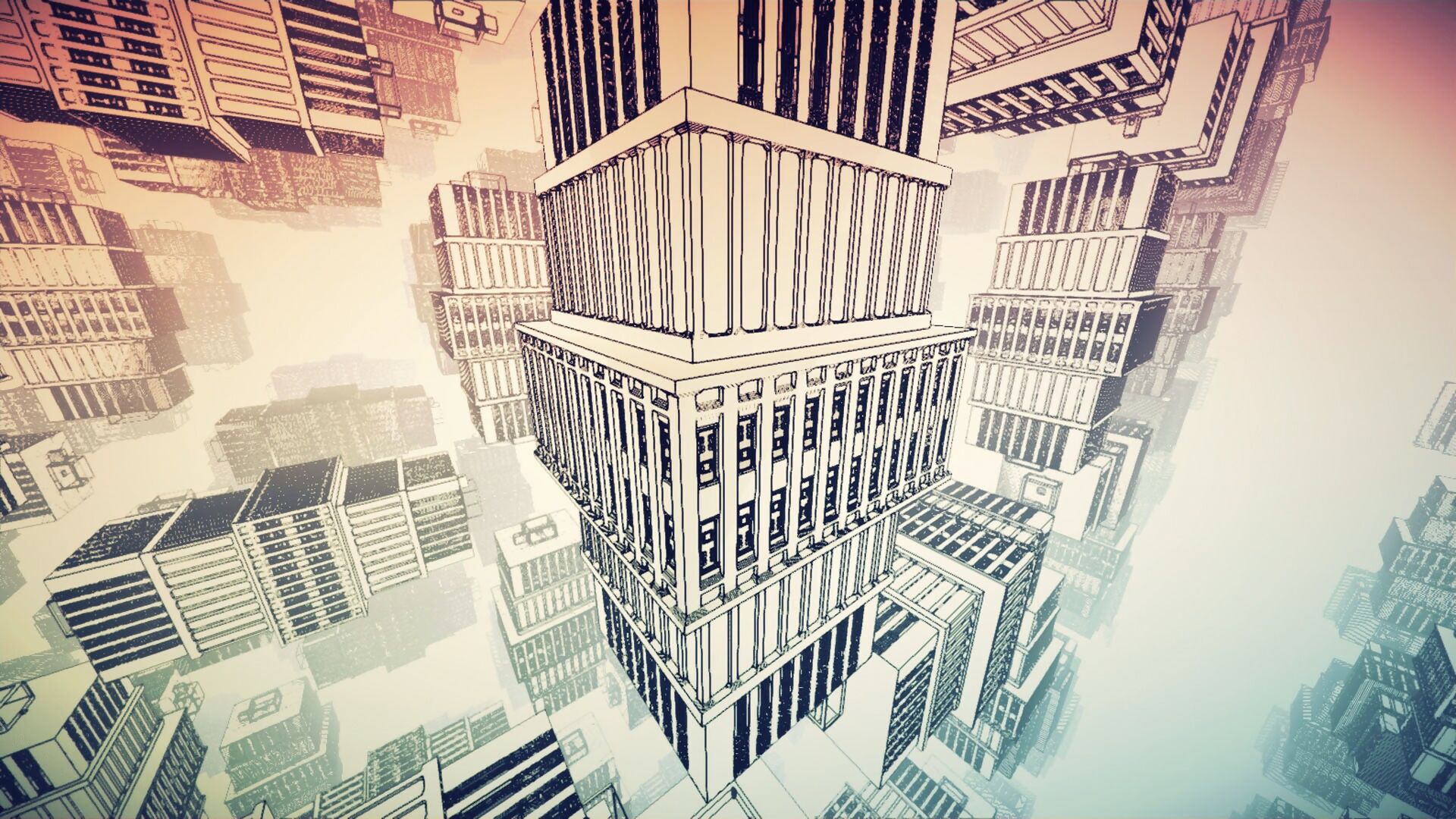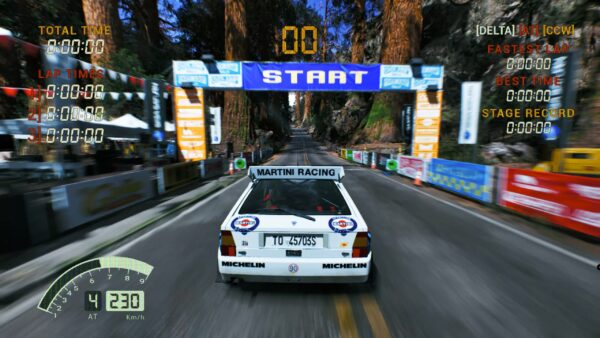
Video games expose the adaptability of the human mind. In their virtual worlds, rules that initially seem counter-intuitive or physically impossible soon become second nature. It’s why Super Mario players in the eighties quickly adjusted to the idea that bumping into some mushrooms was good while bumping into others was bad. It’s why we went from cautiously ripping holes through time and space in Portal to cheerfully pulling off complex, physics-bending jumps within a few minutes. And it’s why, despite my initial bafflement at Manifold Garden’s kaleidoscopic imagery, I soon felt quite comfortable with the notion of jumping off one ledge and falling through infinitely recurring instances of a location until I reached a second ledge a few feet away.
Manifold Garden is among the eeriest games I’ve ever played. In terms of its style and atmosphere, it’s like elements of several sci-fi movies mashed together; it’s the Star Gate sequence from 2001: A Space Odyssey; it’s the Paris-folding bit from Inception; it’s the four-dimensional Matthew McConaughey scene from Interstellar. But Manifold Garden is first and foremost a 3D puzzle game about moving blocks, activating switches, and opening doors to access other puzzles. In terms of orthodox game design, this aspect is familiar stuff, which is why the game’s opening scenes are relatively welcoming. The game’s second layer, however, is its gravity-shifting mechanic, if we can call it that; pressing the right trigger (or the right mouse button) alters the world’s gravitational forces so that walls become floors and vice versa; to help keep you oriented, each plane is colour-coded, so one wall might be blue, the floor red, the ceiling yellow, for example, and your cursor will change colour depending on the orientation of the plane it’s pointed at. To complicate things, a coloured cube can only be moved if you’re walking on the plane that matches its colour, so if you want to move a blue cube, then you’ll need to be oriented so that the blue surface is at your feet.
The game’s earliest puzzles take place in enclosed spaces, all the better to help you learn the game’s rules; but just as you settle into a groove, the game ushers you through a set of doors and out into the wider, faintly terrifying world. It’s here that the game begins to show its true complexity, as impossible, geometric architecture stretches recursively off into infinity. In gameplay terms, navigating these landscapes quickly becomes key; the early puzzle alluded to above has you grab a coloured cube, jump off a ledge, fall for what must be at least one real-world kilometre, and land on a surface several yards away where you’ll find a pad to place your cube. You can fall as far as you like in Manifold Garden, and stepping into an empty space doesn’t mean you’ll simply drop in a straight line; as though affected by an unseen breeze, you’re able to steer yourself as you fall, meaning you can see a bit of architecture you want to land on, and take maybe five or six passes through the looping reality to guide yourself over to it.

Manifold Garden ingeniously contrasts its vast outdoor areas with intimate – though hardly less complex – interior spaces.
It all sounds quite bewildering when typed out in black and white, and as mathematically complex as it is, Manifold Garden operates on the level of dream logic as you’re playing it. You’ll find yourself lost among cathedral-like spires that stretch on forever; there are stacked sets of staircases that lead to nowhere, but a quick perspective switch quickly reveals a hidden doorway. Quite how American artist-turned-developer William Chyr even planned all these places, which can theoretically be viewed and explored from any angle, is really anyone’s guess. Even after watching Chyr’s GDC talk, I’m still amazed by the game’s sheer complexity.

Manifold Garden’s more psychedelic moments are also astonishingly pretty.
Faults? Well, some of the trickier puzzles can mean you’re left cluelessly wandering around while clutching a box, like a surrealist Hermes delivery driver. The wider geometric vistas also left this writer with a distinct feeling of vertigo after a few hours, so if you’re prone to migraines or things of that ilk, Manifold Garden is possibly best enjoyed in short bursts. But these are mere niggles in the face of such a fascinating and intricate game. I haven’t even touched on the strange trees that grow cubes like fruit, or how the geometric world gradually becomes first organic and slippery, then flat-out psychedelic in its later stretches. Part puzzle game, part art installation, Manifold Garden can be traced back through earlier games of its ilk – Portal, The Talos Principle, and The Witness spring to mind – but Chyr’s use of perspective, sound, and 3D space create a quite new, captivating experience.





